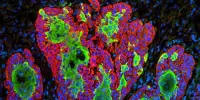The findings of a Danish research study could pave the way for a more effective application of the revolutionary gene technology CRISPR. When it comes to the potential of genetic engineering, the only limit is human imagination, especially after the breakthrough of CRISPR technology. A new Danish research project will help to refine the method and pave the way for a more precise and effective use of ‘genetic scissors.’
Genome editing (also known as gene editing) refers to a set of technologies that allow scientists to alter an organism’s DNA. These technologies enable the addition, removal, or modification of genetic material at specific locations in the genome. There have been several approaches to genome editing developed. CRISPR-Cas9, which stands for clustered regularly interspaced short palindromic repeats and CRISPR-associated protein 9, is a well-known example. The CRISPR-Cas9 system has piqued the scientific community’s interest because it is faster, cheaper, more accurate, and efficient than other genome editing methods.
“Our study shows that, by better understanding the CRISPR/Cas9 protein and its gRNA component, we can more accurately hit and cut the DNA and thereby optimise the effectiveness of gene modification,” says Yonglun Luo, associate professor at the Department of Biomedicine, Aarhus University.
We’ll also try to find new methods of measuring on-target and off-target areas and developing innovative methods to address the off-target challenges that still limit our ability to use the CRISPR-Cas9 method.
Yonglun Luo
Revolutionary technology
Researchers discovered a protein in bacteria that can cut DNA and uses a so-called guide RNA to determine where the DNA should be cut ten years ago. Since then, the CRISPR method has been heralded as a breakthrough in gene technology.
CRISPR allows you to remove or insert the exact genes you want in any living organism, from bacteria to plants to humans. CRISPR technology can also be used to cure diseases by precisely correcting errors in our genes. This means that the technology has almost limitless applications in basic research, public health, agriculture, and medicine.

Preventing unintended modifications
The technology’s implementation will necessitate that the method be effective and precise, so that we only achieve the desired, rather than unintended, gene modifications. Researchers from the University of Copenhagen and Aarhus University used an energy-based model to identify the mechanisms regulating CRISPR-Cas9 activity and specification in order to better understand the mechanisms that affect the effectiveness of the CRISPR method.
This model allows researchers to create gRNA components that improve the method’s effectiveness while minimizing unintended consequences, also known as ‘off-target effects.’
“Unintended off-targets are a major concern when using the CRISPR method to treat diseases, and most tools for measuring off-targets have serious limitations and do not include the factors that we discovered in our study. These discoveries have given us the key to designing CRISPR-gRNA with high effectiveness and precision” Yonglun Luo elaborates.
Refining the method
The researchers behind the study will continue to refine the method and the design of the gRNA component in order to improve the method’s effectiveness and precision.
Genome editing is of great interest in the prevention and treatment of human diseases. Genome editing is currently used in research labs in cells and animal models to better understand diseases. Scientists are still investigating whether this method is safe and effective for use in humans. It is being studied in research and clinical trials for a wide range of diseases, including single-gene disorders such as cystic fibrosis, hemophilia, and sickle cell disease. It also holds promise for the treatment and prevention of more complex diseases such as cancer, heart disease, mental illness, and HIV infection.
“We’ll also try to find new methods of measuring on-target and off-target areas and developing innovative methods to address the off-target challenges that still limit our ability to use the CRISPR-Cas9 method,” says Yonglun Luo.
















